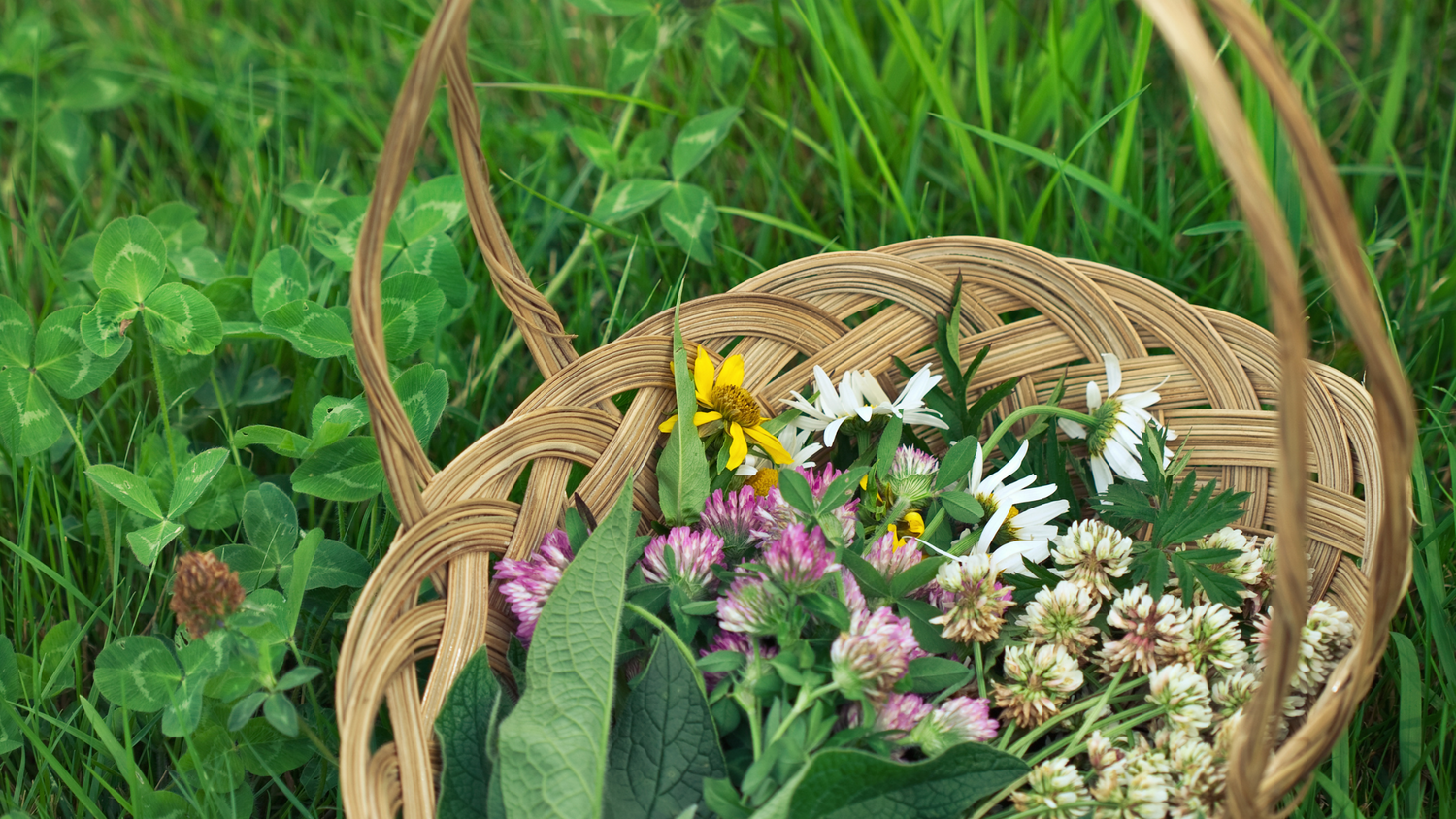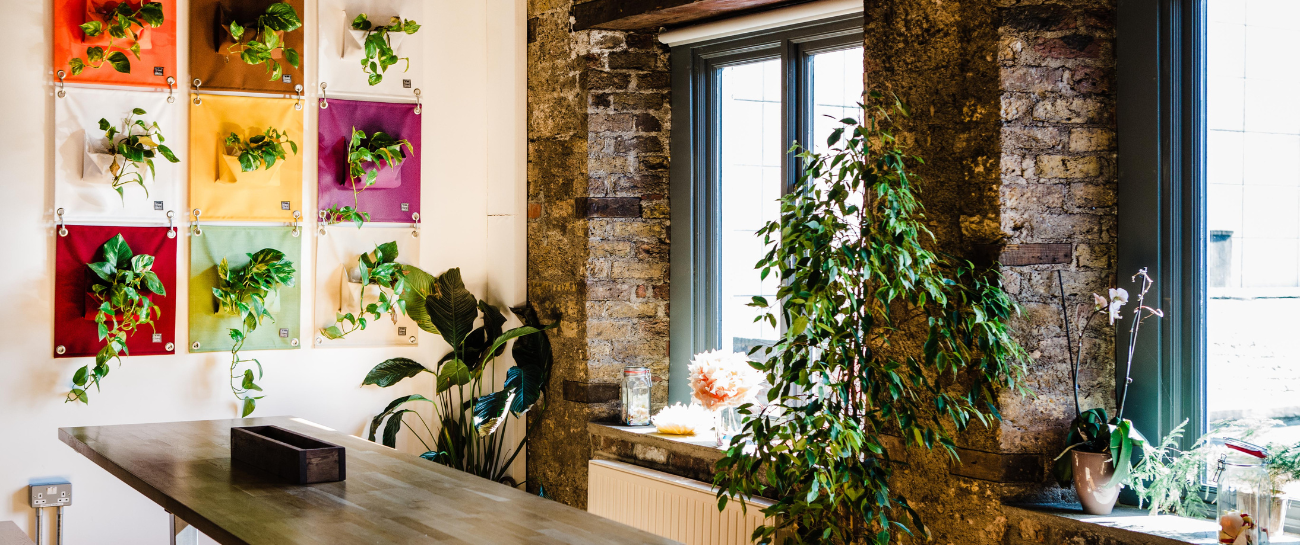As we’re all looking for new, mindful ways to spend our time at home, many of us are turning to indoor gardening whether that's starting a vegetable patch, growing plants in containers, or creating a herb garden.
From tasty basil to fragrant lavender & mint, growing your own herbs can be incredibly rewarding, not to mention handy when it comes to cooking up a storm in the kitchen!
Not sure on how or where to get started? We’ve answered all of your most commonly asked herb questions below!

Why should I grow my own herbs?
Instead of buying packaged herbs at a supermarket, consider growing your own indoor or outdoor herb garden at home.
Here are just some of the benefits of home-grown herbs:
- Better for your pocket: Store bought herbs can cost a pretty penny and often don’t last as well as home-grown varieties.
- Better for your health: When you grow herbs at home, you know exactly how they have been raised. You never have to worry that someone used a harmful pesticide. You have full control over any fertiliser or pest control measures.
- Bring colour to your home: Herbs don’t just taste great, they also look great! Herbs can fit into a compact environment and look great adorning windowsills or kitchen countertops.
- Better for the environment: Most shop bought herbs come in lots of unnecessary plastic packaging. Swapping to home grown allows you to cut down on plastic waste.
- Easy to grow: Herbs are also relatively easy to grow so are perfect for complete beginners right up to the most seasoned gardeners. They also grow well both indoors and outdoors meaning you don’t need a garden or outdoor space to take part in the fun!
- Great cooking resource: One of the biggest appeals of a home-grown herb garden is that you always have some ready for action. Need to spice up a boring dish? Just grab a few sprigs of your favourite herb and *chef’s kiss* you’re done!

What herbs should I grow?
The beauty of growing your own herbs at home is that you have full control of what you grow.
If you’re unsure of where to start, we recommend thinking about what herbs you tend to cook with most often and then grow from there. Everyday dependables like basil, mint and coriander are common firm favourites as they are easy to grow and have many practical uses.

What will I need?
Everything you need for your herb garden can be found in our DIY Herb Growing Kits, available to shop in two sizes here.
If you want to source the materials on your own, consider the following key tips:
- Whether your pot fits one plant or three, you’ll want to give at least eight inches of space to each plant to avoid overcrowding.
- Small pots work best if you’re planning on keeping your herbs on a windowsill in the kitchen. Go a little bigger if you’re keeping them on a porch or patio.
- While mason jars can look cute, we recommend planting your herbs in a well-draining container. Soggy soil can lead to root rot which leads to very unhappy herbs.

Where do I start?
Step 1. Order our DIY Herb Growing Kit available in two sizes here.
Step 2. Follow our step by step guide:

How do I keep my herbs happy?
As long as you take care of them, most herbs tend to continue to grow for months to come.
By and large, all herbs need the same treatment – which is moderate and regular watering.
Take care not to oversaturate the soil. The top of the soil should be dry before you water them again.
Sunlight is also key to help your herbs flourish. Culinary herbs can be planted in an indoor or outdoor garden space, or in a planter box on a sunny window sill. Be cognizant of how much light your plants are getting, and harvest them often to encourage continued growth.
Remember, just like other indoor plants, the care needed needs to be tailored to each specific herb. Here’s an overview of each herb and their needs:
Basil (Annual growth)
Relatively easy to grow, basil prefers sunny locations. It also does best in rich soil that's well-watered. Basil thrives in heat and light, so keep it in an especially sunny window or under a grow lamp. When well-tended, basil will keep and grow for several weeks, but a long-term supply will require frequent replanting.
Mint (Perennial growth)
Known for its aggressive growth rate, mint is best in its own container and above ground. It can handle shade but it's better suited to strong sunlight. The plant grows fine in shade, but it’ll grow with more oomph in strong sunlight.
Oregano (Perennial growth)
This herb has small and flavorful leaves. It requires full sunshine and lots of drainage.
Flat leaved parsley (Bi-annual growth)
Parsley does best in moist, well-drained soil and can grow in partially shaded areas. Parsley grows both in full sun and partial shade, but in warmer climes, it does best when shaded in the hot afternoon hours. Be sure to plant it in a deep pot—it can shoot up to two feet tall.
Thyme (Perennial growth)
This herb prefers less water but you will still need to keep the surface of the soil moisturised to prevent wilting. You do need to give thyme exposure to full sunlight and well-drained soil. Plant thyme in fast-draining soil mix and give it a spot on a warm, sunny windowsill.
Rosemary (Perennial growth)
Rosemary requires cool climates with plenty of sun and moist (not wet) soil. It's also best to bring rosemary indoors for the winter. If the conditions are right, rosemary grows year-round: Warm temperatures don’t deter it in the summer, and it’ll thrive in cooler winter temperatures as long as there’s access to a strong light source.

How do I use them?
Most herbs generally take approximately 2 weeks to fully mature.
Once ready to harvest, we recommend doing so first thing in the morning when their essential oils are most potent.
Try not to use up all of the herb’s big leaves at once. Take a mixture of big and small and old and new and your herb plant will be happier and healthier for longer.
Fresh herbs can be dried and used for months. We love this blog as a quick and easy to follow guide on the best way to do this.
Freezing herbs is also easy. Simply remove the leaves from the stems, rinse and allow them to dry on a flat surface. Once dry, you can bunch the leaves together in a bag or container and keep them in a freezer to add to sauces, soups etc in a pinch!
Herbs have so so many uses. Here are a few of our favorites:
- Lavender: Squeeze fresh lavender flowers to release their calming oils onto your fingertips, then rub your temples. Or boil their leaves and breathe in their calming aroma.
- Rosemary: From simple detox water to delicious cocktails, rosemary gives an added kick to your favorite tipples.
- Thyme: Steep 3 clean thyme sprigs into a mug of boiling water to make your very own anti-inflammatory tea. Great for soothing sore throats, coughs and stomach aches.
- Basil: Preserve your basil harvest by making a simple vinegar or oil infusion. Great for adding a flavour boost to salads!
- Mint: Add a sprig to ice cube molds and keep in your freezer to add a kick to sparkling water, smoothies or cocktails.
If you enjoyed this blog, why not check out some similar posts:
- 7 Lessons Plants Have Taught Us About Self-Care
- Re-potting your houseplant: Everything you need to know
- Our guide to choosing the right plant for each room in your home





